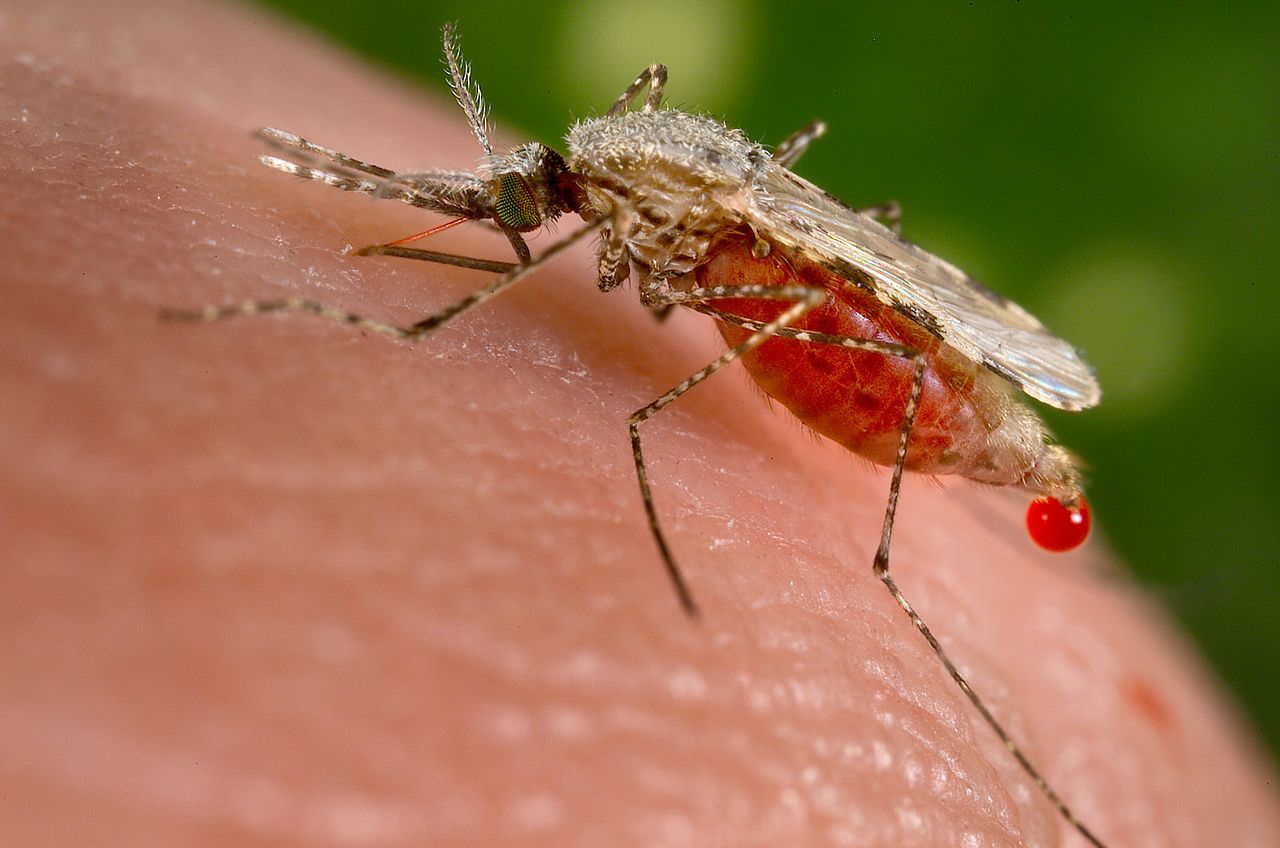Lab 5: Modeling the System Dynamics of Malaria in Rwanda
Description

The most deadly strain of malaria is caused by Plasmodia falciparum, which is transmitted by Anopheles mosquitoes. In Africa, malaria killed close to 400,000 people in 2016.
In this lab, we will model the lifecycle of the malaria parasite and its relationship with humans and mosquitoes using the tools of system dynamics. Our model will become increasingly complex as we add environmental changes and treatment options.
Note: The links below should be the starting point for your research, you are encouraged to search beyond these for more supporting information and cite your sources.
Step 1: Initial Research
Research the life cycle of malaria using the CDC Malaria website as a primary resource. Write a summary of your findings.
Step 2: Compartment Model
Based on your research above, draw an SIR compartment model to describe the flow of the human population from susceptible to infected to recovered. Draw another SIR compartment model describing the flow of the mosquito population. Describe the relationship between your two population models.
The compartment model diagram can be drawn using any tool of your choosing:
- https://www.figma.com/
- Microsoft Teams may have apps to install
- https://miro.com/
- https://www.zenflowchart.com/
- https://www.microsoft.com/en-us/microsoft-365/visio/flowchart-software
- https://textografo.com/
Step 3: Parameter Investigation
Investigate the WHO malaria fact sheet for Rwanda, the President’s Malaria Initiative fact sheet, and the “In Rwanda, ‘Human Bait’ Volunteers Help Battle Malaria” article to determine your model parameters and initial populations. Also research the number of mosquitoes that live in an acre and estimate their population.
Step 4: Euler’s Method
Using Forward Euler’s Method, simulate the spread of malaria in Rwanda over the next 60 months. Start in October 2022.
Draw charts showing how the populations of mosquitoes and humans change over time, with a line for each of the individual compartments you drew above in Step 2.
Describe the results of your simulation. Do they fit your expectations? Why or why not? What simplifications do you think are the major factors in any differences with reality.
Step 5: Climate Change
Mosquitoes thrive in wet and rainy environments. Climate change will have a significant impact on diseases like malaria.
Incorporate the following climate data for Rwanda into your model’s mosquito population using the ideas from an article in the journal Parasites and Vectors.
Rerun you simulation, draw a chart, and describe the differences you find.
Step 6: Drug Therapy
Antimalarial drugs such as Hydroxychloroquine can be effective in the prevention of humans contracting malaria.
Research the efficacy of these medications in Rwanda and update your model, factoring in a 75% adoption rate of these medicines by the general population.
Rerun you simulation, draw a chart, and describe the differences you find.
Step 7: Genetically-Engineered Mosquitoes
Recently, genetically-engineered mosquitoes have been developed in an attempt to inhibit the spread of malaria.
Research the effectiveness of releasing these mosquitoes into the environment. Incorporate your findings into your model, assuming they will be released in Rwanda in April 2024.
Rerun you simulation, draw a chart, and describe the differences you find.
Step 8: Conclusion
Write a summary of your modeling results and the process your team used to create your simulations. How sensitive is your
model to the assumptions you made in finding population numbers and rates of change? What do you think is the largest problem with your model? How else would you augment the model going forward?
What To Turn In
As you work on this lab, record all of your progress in a Jupyter notebook. Record your solutions and attempts in Code blocks, and annotate what you did with MarkDown blocks. Cite all the webpages you find and use in your search for your solution. A good solution should read like a self-contained report.
- Add your name and your lab partner at the top of the notebook.
- https://dillinger.io/ for good
MarkDown styling.
- Overleaf for good
LaTeX styling.
- Go to the file menu and do “Kernel -> Restart and Run All” before submitting. This ensures there are no runtime errors and all figures are generated correctly.
Grading
-
Complete: Notebook can be read easily w/o needing to reference this page for additional detail. It should read like a self-contained report. It can be executed without producing runtime errors. All steps (1 - 8) are finished and all discussion questions are answered.
-
Partially complete: Notebook can be executed without producing runtime errors. Steps (1-5, 8) are finished and discussion questions are answered.